|
Books Should Be Free Loyal Books Free Public Domain Audiobooks & eBook Downloads |
|
|
Books Should Be Free Loyal Books Free Public Domain Audiobooks & eBook Downloads |
|
War Stories |
|---|
|
Book type:
Sort by:
View by:
|
By: Joseph Alexander Altsheler (1862-1919) | |
|---|---|
 Shades of the Wilderness
Shades of the Wilderness
"The Shades of the Wilderness" is the seventh book of the Civil War Series by Joseph A. Altsheler. Picking up where "The Star of Gettysburg" left off, this story continues the Civil War experiences of Harry Kenton and his friends in the Southern army, from the retreat after Gettygurg, to Richmond, and then through the battles of the Wilderness and Spottsylvania, to Robert E. Lee's heroic stand during the siege of Petersburg. Other books in the Civil War series are: "The Guns of Bull Run," "The Guns of Shiloh," "The Scouts of Stonewall," "The Sword of Antietam", "The Star of Gettysburg","The Rock of Chickamauga", and "The Tree of Appomattox." | |
By: Joseph Conrad (1857-1924) | |
|---|---|
 Lord Jim
Lord Jim
This story opens on a ship crowded with pilgrims traveling from Singapore to Mecca for the hajj. A young Englishman is the vessel's first mate. This is his first job and it is something that he has longed for all his life—to be on board a ship that sails the seven seas. One night as the ship sails through the calm waters of the Arabian Sea, it mysteriously begins to shudder. The crew, including the young first mate, believe that it is about to sink. They decide to strike out for themselves in a life-boat, abandoning the passengers... | |
By: Joseph H. Alexander (1938-2014) | |
|---|---|
 Final Campaign: Marines in the Victory on Okinawa
Final Campaign: Marines in the Victory on Okinawa
The three-month-long battle of Okinawa covered a 700-mile arc from Formosa to Kyushu and involved a million combatants--Americans, Japanese, British, and native Okinawans. With a magnitude that rivaled the Normandy invasion the previous June, the battle of Okinawa was the biggest and costliest single operation of the Pacific War. For each of its 82 days of combat, the battle would claim an average of 3,000 lives from the antagonists and the unfortunate non-combatants.” | |
 Closing In: Marines in the Seizure of Iwo Jima
Closing In: Marines in the Seizure of Iwo Jima
Sunday, 4 March 1945, marked the end of the second week of the U.S. invasion of Iwo Jima. By this point the assault elements of the 3d, 4th, and 5th Marine Divisions were exhausted, their combat efficiency reduced to dangerously low levels. The thrilling sight of the American flag being raised by the 28th Marines on Mount Suribachi had occurred 10 days earlier, a lifetime on “Sulphur Island.” The landing forces of the V Amphibious Corps had already sustained 13,000 casualties, including 3,000 dead... | |
 Across the Reef: The Marine Assault of Tarawa
Across the Reef: The Marine Assault of Tarawa
"Tarawa Atoll is 2085 miles southwest of Pearl Harbor and 540 miles southeast of Kwajalein in the Marshalls. Betio is the principal island in the atoll. The Japanese seized Tarawa from the British within the first three days after Pearl Harbor. In August 1943, to meet in secret with Major General Julian C. Smith and his principal staff officers, Vice Admiral Raymond A. Spruance flew to New Zealand from Pearl Harbor. Spruance told the Marines to prepare for an amphibious assault against Japanese positions in the Gilbert Islands in November... | |
By: Joseph L. Lettau (1893-1950) | |
|---|---|
 In Italy with the 332nd Infantry
In Italy with the 332nd Infantry
A brief, personal recounting of the 332nd Infantry in World War I, including training in America, a brief billet in France, activities in Italy, and the return to America. Summary by KevinS | |
By: Joseph Lievesley Beeston | |
|---|---|
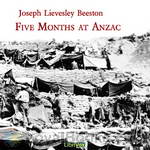 Five Months at Anzac
Five Months at Anzac
A Narrative of Personal Experiences of the Officer Commanding the 4th Field Ambulance, Australian Imperial Force from his leaving Australia December 1914 till his evacuation due to illness after 5 months at Gallipoli. Read to remember those who were there. (Introduction by Annise) | |
By: Joseph Martin McCabe (1867-1955) | |
|---|---|
 Romance of the Romanoffs
Romance of the Romanoffs
The eighteenth, nineteenth and early twentieth centuries were periods of stark contrast between the opulent lifestyle of the rich and the extreme poverty of the peasants throughout the world. In addition, Russia straddled eastern and western cultures, not fitting neatly into either. The church was an important force, and those adhering to traditional eastern religions were peaceful and accustomed to 'doing as they were told'; followers of western thought were more eager for a democratic society. Add an autocratic czar and the conditions were ripe for revolution, corruption and murder... | |
By: Joseph P. Cullen | |
|---|---|
 Richmond National Battlefield Park, Virginia
Richmond National Battlefield Park, Virginia
Richmond, Virginia, was the capital of The Confederacy during the American Civil War, 1861-1865. It was the focus of two military campaigns by Northern armies, one in the summer of 1862 and the second in 1864-1865. When the city was conquered and destroyed in early April, 1865, , it was only a few days later that General Lee surrendered to General Grant and the Civil War was over. Published in 1961, this is National Park Service Historical Handbook 33. The text contains many informative maps and interesting photographs. - Summary by david wales | |
By: Joseph Plumb Martin (1760-1850) | |
|---|---|
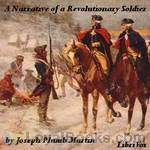 A Narrative of a Revolutionary Soldier
A Narrative of a Revolutionary Soldier
Joining the Continental Army as a teenager, Joseph Plumb Martin spent the next eight years fighting in the Revolutionary War as an enlisted man. His memoirs tell in detail his experiences during that time...the bitter cold, hunger, loss of life, long marches, and fear of battle. He also includes tales of fishing, hunting, and other activities...including encounters with a "saucy miss". His narrative reveals much about American life at the time and is one of the fullest and best accounts of the Revolutionary War, presented from a private's point of view.The book has been later republished under the names Private Yankee Doodle and Memoir of a Revolutionary Soldier. | |
By: Jules Verne (1828-1905) | |
|---|---|
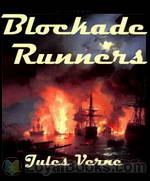 The Blockade Runners
The Blockade Runners
Writing at the end of the American Civil War, Verne weaves this story of a Scottish merchant who, in desperation at the interruption of the flow of Southern cotton due to the Union blockade, determines to build his own fast ship and run guns to the Confederates in exchange for the cotton piling up unsold on their wharves. His simple plan becomes complicated by two passengers who board his new ship under false pretenses in order to carry out a rescue mission, one which Capt. Playfair adopts as his own cause. This is going make the Rebels in Charleston rather unhappy with him.Sure, his new ship is fast - but can it escape the cannonballs of both North and South? | |
 Begum's Fortune
Begum's Fortune
A novel with some utopian elements, but primarily dystopian. A French doctor and a German professor both inherit a vast fortune as descendants of a French soldier who married the rich widow of an Indian prince. They both decide to go to America and establish their own "ideal" society. Dr. Sarrasin, the French doctor, is focused on maintaining public health. He builds Ville-France. Professor Schultze, the German scientist, is a bit of a militarist and racist. He builds Stahlstadt and devotes his city to the production of ever more powerful weapons so that he can destroy Sarrasin's city... | |
By: Julius Klausner, jr | |
|---|---|
 History of Company B 307th Infantry
History of Company B 307th Infantry
The history of Company B, 307 Infantry's participation in The First World War. A part of the 77th Division it trained at Camp Upton, New York before leaving for France. | |
By: Justin McCarthy (1830-1912) | |
|---|---|
 History of the Four Georges in Four Volumes, Volume 2
History of the Four Georges in Four Volumes, Volume 2
Justin McCarthy (1830-1912), liberal member of Parliament and historian. He brings the great 18th Century personalities to life: Walpole and Swift, Bolingbroke and Mary Wortley Montagu, the Old Pretender, Bonnie Prince Charlie, and the four King Georges. This second volume brings us the terrible death of Queen Caroline, Swift and Stella, the Jacobite rising of 1745, the Wesleyan Movement, Clive's victories, and the struggle for Canada. | |
 History of Our Own Times From the Accession of Queen Victoria to the General Election of 1880, Volume I
History of Our Own Times From the Accession of Queen Victoria to the General Election of 1880, Volume I
An engaging history of Great Britain in the heyday of Queen Victoria and of her empire by the liberal Irish Member of Parliament, Justin McCarthy. He brings us the larger than life personalities of the day, Victoria and Albert, Russell and Peel, O'Connell and Palmerston, Gladstone and Disraeli, and relates great events, the Afghan War, the Irish famine, and the Crimean War without ever losing sight of the hopes and fears of the common people at home and abroad. | |
 History of Our Own Times From the Accession of Queen Victoria to the General Election of 1880, Volume II
History of Our Own Times From the Accession of Queen Victoria to the General Election of 1880, Volume II
Volume II of this popular history opens in the revolutionary year, 1848, with the Chartist movement for manhood suffrage and with the rise of Young Ireland. Next we join the crowds in 1851 at the opening of the Great Exhibition in Hyde Park, of which Queen Victoria wrote, ''A little rain fell just as we started, but before we came near the Crystal Palace the sun shone and gleamed upon the gigantic edifice, upon which the flags of all nations were floating.'' Hopes for a new era of peace expired in... | |
 History of Our Own Times From the Accession of Queen Victoria to the General Election of 1880, Volume III
History of Our Own Times From the Accession of Queen Victoria to the General Election of 1880, Volume III
Volume III of this history of Victorian Britain begins in 1856 with the gunboat diplomacy of the Second Opium War and then moves to the harrowing days of the Indian Rebellion of 1857. In June 1858, Benjamin Disraeli secures passage of the Jews Relief Act and Baron Lionel Nathan de Rothschild takes his seat in Parliament. Prince Albert dies after a short illness in December 1861, leaving a distraught and cloistered Queen. Lord Palmerston's diplomacy increases Britain's influence on the Continent, while the Civil War in America divides the country in surprising ways. Bismarck emerges and Prussia begins her ascent to power. | |
 History of Our Own Times From the Accession of Queen Victoria to the General Election of 1880, Volume IV
History of Our Own Times From the Accession of Queen Victoria to the General Election of 1880, Volume IV
The fourth and concluding volume of this history of Victorian Britain opens with the brutal repression in 1865 of a rebellion by ex-slaves in Jamaica. Then in 1867, the Conservative Prime Minister, Benjamin Disraeli, takes his celebrated "leap in the dark" with the passage of the most comprehensive expansion of manhood suffrage in British history. The Fenian movement agitates unsuccessfully for Irish independence. British trade unions win the right to organize. William Ewart Gladstone launches his great reform ministry by abolishing in Ireland the hated Anglican establishment and follows with a flood of bills reforming education, the British army, and poor relief... | |
By: Karl Ploetz (1819-1881) | |
|---|---|
 World’s Story Volume XIV: An Outline of Universal History
World’s Story Volume XIV: An Outline of Universal History
The fourteenth volume of the 15-volume series The World’s Story has a different concept than the previous books edited by Eva March Tappan. This book lists a detailed timeline of important events, starting from the early Eastern cultures till up to recent events from the beginning of the 20th century. The original book was compiled in German by historian Karl Ploetz and translated into English for this series by William H. Tillinghast . - Summary by Sonia | |
By: Kate John Finzi | |
|---|---|
 Eighteen Months in the War Zone: A Record of a Woman's Work on the Western Front
Eighteen Months in the War Zone: A Record of a Woman's Work on the Western Front
"But it is not for those who heard the call in the later months so much as in memory of those early heroes of Mons, who knew the bitterness of a valiant retreat, the horror of forced marches along parched roads, with only the prod of the next man's bayonet to keep him awake, and only a flap cut from the tail of his shirt between the pitiless sun and the dreaded delirium that would leave him a prey to the Huns' barbarities; in memory of these it is that I take up the pen to run the gauntlet of a thousand critical eyes on a way fraught with difficulties." ~ Kate John Finzi | |
By: Kenneth Darlaston Yearsley (1892-1965) | |
|---|---|
 Four-Fifty Miles to Freedom
Four-Fifty Miles to Freedom
Four-Fifty Miles to Freedom is the true but little known story of the escape of eight British Prisoners-of-War from a Turkish POW camp during the First World War. The story, written by two of the escapees, describes their life in the various POW camps in Turkey in which they were moved around, and then their well-planned and executed escape from the camp at Yozgad. They were then faced with a trek of over three hundred miles across arid deserts, and a mountain range, constantly searching for water, all the while attempting to avoid detection by soldiers and the local population... | |
By: L. Frank Baum (1856-1919) | |
|---|---|
 Mary Louise and the Liberty Girls
Mary Louise and the Liberty Girls
The Bluebird Books is a series of novels popular with teenage girls in the 1910s and 1920s. The series was begun by L. Frank Baum using his Edith Van Dyne pseudonym, then continued by at least three others, all using the same pseudonym. Baum wrote the first four books in the series, possibly with help from his son, Harry Neal Baum, on the third. The books are concerned with adolescent girl detectives— a concept Baum had experimented with earlier, in The Daring Twins (1911) and Phoebe Daring (1912)... | |
 Aunt Jane's Nieces In The Red Cross
Aunt Jane's Nieces In The Red Cross
The 10th and final book in the series for adolescent girls sees two of the three cousins react to atrocities in World War I by volunteering in the Red Cross. Written under the pseudonym of Edith Van Dyne, this is the 1915 version, which reflects United States' neutrality. A later version, published in 1918, differed significantly to reflect changes in the position of the United States. | |
By: Lady Dorothy (Stanley) Tennant (1855-1926) | |
|---|---|
 Miss Pim's Camouflage
Miss Pim's Camouflage
Mid-WWI, staid Englishwoman Miss Perdita Pim suffers a sunstroke gardening & gains the power of invisibility. She becomes a super-secret agent, going behind German lines, sometimes visible, sometimes not, witnessing atrocities & gleaning valuable war information. | |
By: Lady Sarah Wilson (1865-1929) | |
|---|---|
 South African Memories
South African Memories
Lady Sarah Isabella Augusta Wilson was the aunt of Winston Spencer Churchill. In 1899 she became the first woman war correspondent when she was recruited to cover the Siege of Mafeking for the Daily Mail during the Boer War. She moved to Mafeking with her husband at the start of the war, where he was aide-de-camp to Colonel Robert Baden-Powell. Baden-Powell asked her to leave Mafeking for her own safety after the Boers threatened to storm the British garrison. This she duly did, and set off on a... | |
By: Leander Stillwell (1843-1934) | |
|---|---|
 The Story of a Common Soldier of Army Life in the Civil War, 1861-1865
The Story of a Common Soldier of Army Life in the Civil War, 1861-1865
Leander Stillwell was an 18-year-old Illinois farm boy, living with his family in a log cabin, when the U.S. Civil War broke out. Stillwell felt a duty “to help save the Nation;” but, as with many other young men, his Patriotism was tinged with bravura: “the idea of staying at home and turning over senseless clods on the farm with the cannon thundering so close at hand . . . was simply intolerable.” Stillwell volunteered for the 61st Illinois Infantry in January 1861. His youthful enthusiasm for the soldier’s life was soon tempered at Shiloh, where he first “saw a gun fired in anger,” and “saw a man die a violent death... | |
By: Leo Tolstoy (1828-1910) | |
|---|---|
 War and Peace
War and Peace
Leo Tolstoy's War and Peace chronicles the lives of five Russian aristocratic families during Napoleon's invasion of Russia. Many considered this book to be the best Russian work of literature of all time and it is massive in scale. The book is divided in four volumes and the chapters don't just contain the narrative of the plot to the novel but philosophical discussions as well. This may be intimidating to average book readers but they shouldn't be discouraged to try reading War and Peace. After all, this book was written for all and not just for intellectuals... | |
 Bethink Yourselves!
Bethink Yourselves!
As Russia goes to war against Japan, Tolstoy urges those at all levels of society, from the Tsar down to the common soldier, to consider their actions in the light of Christ's teaching. "However strange this may appear, the most effective and certain deliverance of men from all the calamities which they inflict upon themselves and from the most dreadful of all—war—is attainable, not by any external general measures, but merely by that simple appeal to the consciousness of each separate man which, nineteen hundred years ago, was proposed by Jesus—that every man bethink himself, and ask himself, who is he, why he lives, and what he should and should not do... | |
 War and Peace Vol. 1 (Dole Translation)
War and Peace Vol. 1 (Dole Translation)
”War and Peace” is a panoramic novel: It is its own justification, and perhaps needs no introduction. It always reminds the translator of a broad and mighty river flowing onward with all the majesty of Fate. On its surface, float swiftly by logs and stumps, cakes of ice, perhaps drowned cattle or men from regions far above. These floating straws, insignificant in themselves, tell the current. Once embark upon it, and it is impossible to escape the onward force that moves you so relentlessly. What landscapes you pass through, what populous towns, what gruesome defiles, what rapids, what cataracts! The water may be turbid, or it may flow translucent and pure, – but still it rushes on... | |
 Sevastopol
Sevastopol
Sevastopol Sketches (Russian: Севастопольские рассказы, Sevastopolskiye rasskazy) are three short stories written by Leo Tolstoy and published in 1855 to record his experiences during the Siege of Sevastopol (1854–1855) in the Crimean War (1853-1856). The name originates from Sevastopol, a city in Crimea. The book has also been released under the anglicized title The Sebastopol Sketches and is sometimes titled Sevastopol Stories. These brief "sketches" formed the basis of many of the episodes in Tolstoy's magnum opus, War and Peace... | |
 War and Peace Vol. 2 (Dole Translation)
War and Peace Vol. 2 (Dole Translation)
I am inclined to rank Count Tolstoy not among the realists or naturalists, but rather as an impressionist. He is often careless about accuracy. Numberless incongruities can be pointed out. He is as willing to adopt an anachronism as a medieval painter. I would defy an historian to reconstruct the battle of Austerlitz from Count Tolstoy's description. And yet what a picture of a battle was ever more vivid! It is like a painting where the general impression is true, but a close analysis discovers... | |
By: Leon Trotsky (1879-1940) | |
|---|---|
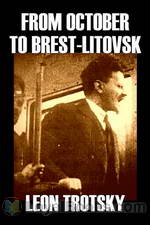 From October to Brest-Litovsk
From October to Brest-Litovsk
This account by Trotsky is of the events in Russia from the October Revolution of 1917 in Petrograd, to his signing of the Brest-Litovsk treaty with Germany on 3rd March 1918 which took Russia out of the First World War. The treaty exacted heavy losses for Russia in terms of annexations of land and financial indemnities to Germany. In this extended essay, Trotsky argues the reasons as to why he decided to sign what appears to be a disastrous agreement for Russia. | |
By: Leonid Nikolayevich Andreyev (1871-1919) | |
|---|---|
 Red Laugh
Red Laugh
The reader is immersed in the Hellish madness of war through the eyes of a tired soldier losing his grip on reality, scarred physically and mentally by the atrocities he witnesses. Lauded author Leonid Andreyev, who many consider Russia's Edgar Allan Poe, gives us a powerful and intense narrative showing the horrors of war and its impact on the psyche. - Summary by Ben Tucker | |
By: Leslie Buswell (1890-1964) | |
|---|---|
 With The American Ambulance Field Service In France; Personal Letters Of A Driver At The Front
With The American Ambulance Field Service In France; Personal Letters Of A Driver At The Front
This 1915 publication collects letters written by a driver for the American ambulance service. The incidents they relate occurred before the entrance of the United States into World War I as a combatant. “These letters, according to ordinary ethics in such matters, should not, perhaps, be published. They were merely intended as tributes of friendship and remembrance. Casually written — in pencil often — at moments between duties, with no thought of their being destined to any further purpose than that distance and absence might count a little less through the pictures they would give of a day's work far away.” - Summary by Book Preface and David Wales | |
By: Lessel Finer Hutcheon (1897-1962) | |
|---|---|
 War Flying by a Pilot
War Flying by a Pilot
Published in 1917, this "little volume of 'Theta’s' letters to his home people" was assembled to provide useful information for young men who might like to become pilots for the Royal Flying Corps. A mixture of conversational letters, poems, and descriptions of flying, the book proves entertaining, even today, despite having been written in training and in active duty during World War I. - Summary by Lynette Caulkins | |
By: Lester del Rey | |
|---|---|
 Victory
Victory
Lester del Rey (1915 – 1993) was a Golden Age science fiction author and editor closely connected to John W. Campbell Jr. and Astounding Science Fiction magazine. He also founded Del Rey Books, a popular publishing label he edited with his wife Judy-Lynn. Victory is the story of an undefended Earth in a warring galaxy. It appeared in the August 1955 issue of Astounding Science Fiction. | |
By: Lewis R. Freeman (1878-1960) | |
|---|---|
 Stories of the Ships
Stories of the Ships
While most associate the "Great War" with trenches, barbed wire, machine guns, and poison gas, ships played roles in the military at the beginning of the 20th century. Stories of the Ships is a 1919 collection of accounts described in the first person by those who fought battles on the sea during World War I. It gives the listener a more complete account of the conflicts that defined the most costly war in history. Lewis Ransome Freeman was an American explorer, journalist and war correspondent who wrote over twenty books chronicling his many travels, as well as numerous articles... | |
By: Lily Dougall (1858-1923) | |
|---|---|
 Mermaid
Mermaid
"'What a fool I was not to go where she beckoned!' mused Caius. 'Where? Anywhere into the heart of the ocean, out of this dull, sordid life into the land of dreams.' For it must all have been a dream—a sweet, fantastic dream, imposed upon his senses by some influence, outward or inward; but it seemed to him that at the hour when he seemed to see the maid it might have been given him to enter the world of dreams, and go on in some existence which was a truer reality than the one in which he now was... | |
By: Lord Dunsany (1878-1957) | |
|---|---|
 Tales of War
Tales of War
Lord Dunsany brings his lucid and magical prose to the subject of the harsh realities of war by providing a series of vignettes that are at times grim and grounded but also at times eerie and fantastical. Summary by Ben Tucker. | |
By: Lord Thomas Cochrane (1775-1860) | |
|---|---|
 Autobiography of a Seaman, Vol. 1
Autobiography of a Seaman, Vol. 1
This two volume work is the autobiography of Lord Cochrane, a naval captain of the Napoleonic period. His adventures are seminal to the development of naval fiction as a genre. Marryat sailed with Cochrane, while later writers borrowed incidents from this biography for their fictions. Most notable among these is Patrick O'Brian, three of whose novels have clear parallels to incidents in the life of Cochrane. This first volume covers Cochrane's earlier life, during which he is most active militarily. (Introduction by Timothy Ferguson) | |
 Autobiography of a Seaman, Vol. 2
Autobiography of a Seaman, Vol. 2
This second volume of the biography of Lord Cochrane deals with his fall from grace, imprisonment for debt, loss of honours, and attempts to clear his name. It has had a marked influence on naval fiction, most obviously on some of the novels by Patrick O'Brian. - Summary by Timothy Ferguson | |
By: Louis Joseph Vance (1879-1933) | |
|---|---|
 The False Faces
The False Faces
This is the second book in the Lone Wolf series. Michael Lanyard had turned his back on his career as gentleman-thief and started a respectable life, when World War I wrecks his life. With his family dead and the spy Ekstrom alive after all, his special skills as the Lone Wolf are needed once more, this time in the war behind enemy lines. But again, there is a mysterious woman involved... | |
By: Louise Mack (1870-1935) | |
|---|---|
 Woman's Experiences in the Great War
Woman's Experiences in the Great War
An eye-witness account of the fall of Antwerp to the Germans in the opening months of World War I, Mack’s story has passages of extraordinary vividness and immediacy. Flawed by the most treacly sentiment in some places and the most ferocious anti-German invective in others, her account endures as an uncommonly forthright, passionate testimony to those tragic events and the ordinary people who were the true heroes of them. As a forty-something, coquettish war correspondent wrapped in sable furs... | |
By: Lucy Fitch Perkins | |
|---|---|
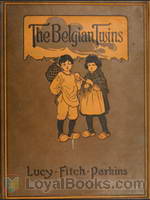 The Belgian Twins
The Belgian Twins
This story is based upon the experiences of two Belgian refugees in World War I. When their parents are marched of by Germans, Jan and Marie are left alone. Now they, along with their dog, have to find their parents! | |
By: Lucy Maud Montgomery (1874-1942) | |
|---|---|
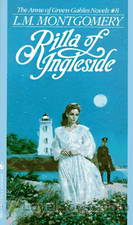 Rilla of Ingleside
Rilla of Ingleside
Rilla of Ingleside is the eighth book in the Anne of Green Gables series and focuses on the inspiring journey of Rilla Blythe, the youngest daughter of Anne and Gilbert, as she transforms from a carefree young girl into an enduring young woman swept into the chaos of war. Written from a female perspective, Montgomery accurately depicts a time in history, as she provides a contemporaneous account of the war and serves up the most emotional book in the series. Set during the First World War, the novel explores themes of coming of age, love, separation, and most importantly women’s roles during the war... | |
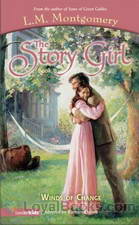 The Story Girl
The Story Girl
Revealed to be a personal favorite by Montgomery herself, The Story Girl follows the lives of a group of young children as they experience a summer of charming and realistically clumsy adventures. Published in 1911, the novel explores themes of childhood innocence and its transience, while highlighting the value of intangible things which prove to be the very essence of life. The novel begins when the young narrator Beverly King and his brother Felix are sent to stay with their Aunt Janet and Uncle Alec at their country estate over the summer, while their widowed father is away on business abroad... | |
 The Golden Road
The Golden Road
In the sequal to The Story Girl Sara Stanley returns to join the King children in publishing their own local magazine to entertain the town of Carlisle. | |
 Rainbow Valley
Rainbow Valley
If you've read and loved Anne of Green Gables, you'd definitely like to add Rainbow Valley by Lucy Maud Montgomery to your collection. Published in 1919, it is the seventh book in the series and follows the further life and adventures of Anne Shirley. At Ingleside, Anne is now happily married to her childhood friend the devoted Gilbert Blythe and have now been together blissfully for fifteen years. They have six children. The book opens with the return of Anne and Gilbert (who is now a brilliant doctor) from a sojourn in London, where they had gone to attend a big medical congress... | |
By: Mabel Annie Stobart (1862-1954) | |
|---|---|
 War and Women
War and Women
"The sending of a Women’s Convoy Corps to the Balkans was the result of Mrs. Stobart’s keen desire to demonstrate the ability of women to render signal service under war conditions and without the direction and assistance of men. This record of their achievements, therefore, provides a strong vindication of the claims of women to inclusion in the Territorial Defence Scheme". | |
By: Marcel Dupont (1879-1964) | |
|---|---|
 In the Field (1914-1915)
In the Field (1914-1915)
I have merely tried to make a written record of some of the hours I have lived through during the course of this war. A modest Lieutenant of Chasseurs, I cannot claim to form any opinion as to the operations which have been carried out for the last nine months on an immense front. I only speak of things I have seen with my own eyes, in the little corner of the battlefield occupied by my regiment. | |
By: Mark Twain (1835-1910) | |
|---|---|
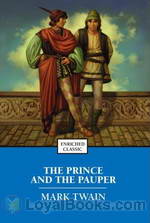 The Prince and the Pauper
The Prince and the Pauper
A poor young boy from the slums of London watches a royal procession pass, with the youthful Prince of Wales riding at its head. He ventures too close and is caught and beaten by the Prince's guards. However, the young royal stops them and invites the vagrant to the palace. Here the two boys sup alone and are stunned to discover that they bear a startling resemblance to each other. The Prince is Edward, long awaited heir of the monarch, Henry VIII, while the vagrant is Tom Canty, the son of a thief and a beggar... | |
 Personal Recollections of Joan of Arc, Volumes 1 & 2
Personal Recollections of Joan of Arc, Volumes 1 & 2
Mark Twain’s work on Joan of Arc is titled in full “Personal Recollections of Joan of Arc, by the Sieur Louis de Conte.” De Conte is identified as Joan’s page and secretary. For those who’ve always wanted to “get behind” the Joan of Arc story and to better understand just what happened, Twain’s narrative makes the story personal and very accessible. The work is fictionally presented as a translation from the manuscript by Jean Francois Alden, or, in the words of the published book, “Freely Translated out of the Ancient French into Modern English from the Original Unpublished Manuscript in the National Archives of France... | |
 Anti-imperialist writings
Anti-imperialist writings
This audiobook is a collection of Mark Twain's anti-imperialist writings (newspaper articles, interviews, speeches, letters, essays and pamphlets). | |
By: Martin Alonzo Haynes (1842-1919) | |
|---|---|
 Minor War History
Minor War History
A personal history of the American Civil War taken from the author's own letters to 'the girl he left behind', who later became his wife. This is not a complete history and does not deal with major events, but is a snapshot of life in the Second New Hampshire Regiment and humanizes the history we study. Haynes went on to have an illustrious career. After the war, he founded a local newspaper, of which he was editor. He was also elected to the New Hampshire House of Representatives, and became clerk to the county Supreme Court... | |
By: Mary Chesnut | |
|---|---|
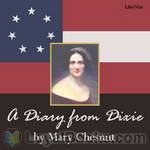 A Diary from Dixie
A Diary from Dixie
Mary Boykin Miller Chesnut, a well-educated South Carolina woman who was the wife of a Confederate general, kept extensive journals during the Civil War. Mrs. Chesnut moved in elite circles of Southern society and had a keen interest in politics. Her diary is both an important historic document and, due to her sharp wit and often irreverent attitude, a fascinating window into Southern society of the time. This recording is of the first published edition of the diary, compiled from Mrs. Chesnut's revisions of her original journals. | |
By: Mary Grant Bruce (1878-1958) | |
|---|---|
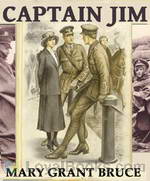 Captain Jim
Captain Jim
This book is about Norah Linton, her brother Jim, her father David and Jim's chum Wally from Australia. They all move to England during WWI because Jim and Wally want to fight in the war.When a Irish friend of the family dies, Norah inherits a big house in Surrey: Homewood. To keep up the Irishman's memory they want to use the house to help the war effort. They turn it into a home for "Tired People"--soldiers recovering from injuries, or soldiers on leave that have no family to go home to, can come here to have a good time and enjoy the country-side, so that they can go back to their regiments fully rested and restored... | |
By: Mary Hazel Snuff | |
|---|---|
 Study Of Army Camp Life During American Revolution
Study Of Army Camp Life During American Revolution
Housing, Food, Clothing, Health, Sanitation, Recreation, Religion, Duties, Discipline. A thesis submitted in partial fulfillment of the requirements for the degree of master of arts in history in the Graduate School of the University of Illinois 1918. - Summary by David Wales | |
By: Mary Rhodes Waring Henagan | |
|---|---|
 Two Diaries From Middle St. John's, Berkeley, South Carolina, February - May, 1865
Two Diaries From Middle St. John's, Berkeley, South Carolina, February - May, 1865
Two diaries from Middle St. John’s, Berkeley, South Carolina, February – May, 1865. Journals kept by Miss Susan R. Jervey and Miss Charlotte St. Julien Ravenel, at Northampton and Poooshee Plantations, and reminiscences of Mrs. Henagan. With two contemporary reports from Federal officials. Published by the St. John’s Hunting Club, Middle St. Johns, Berkeley, South Carolina, 1921. - Summary by Book title and david wales | |
By: Mary Roberts Rinehart (1876-1958) | |
|---|---|
 The Amazing Interlude
The Amazing Interlude
It is the early days of The Great War. As the curtain rises, Sara Lee is sitting by the fire in her aunt and uncle’s home, knitting a baby afghan. Her beau’s name is Harvey. He has his eye on a little house that is just perfect for two and he will soon propose to Sara Lee. But in this play, the mise en scène is about to change. A fairyland transformation will take place and Sara Lee will step into a new and different story, where she is the princess in a forest of adventure. There is a prince, too, whose name is Henri... | |
 Kings, Queens and Pawns: An American Woman at the Front
Kings, Queens and Pawns: An American Woman at the Front
A personal account of the American author's visit to Europe in January 1915 while a war correspondent in Belgium for The Saturday Evening Post. She writes: "War is not two great armies meeting in a clash and frenzy of battle. It is much more than that. War is a boy carried on a stretcher, looking up at God's blue sky with bewildered eyes that are soon to close; war is a woman carrying a child that has been wounded by a shell; war is spirited horses tied in burning buildings and waiting for death; war is the flower of a race, torn, battered, hungry, bleeding, up to its knees in icy water; war is an old woman burning a candle before the Mater Dolorosa for the son she has given... | |